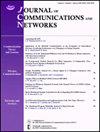In-vehicle network latency analysis for a lane keeping assistance system
IF 3.2
3区 计算机科学
Q2 COMPUTER SCIENCE, INFORMATION SYSTEMS
引用次数: 0
Abstract
Due to the rapid advancements in automotive technologies, vehicles now rely on additional high-speed sensors. This development has led to an increase in transmission rates and traffic levels within in-vehicle networks (IVNs), thereby necessitating changes in the electrical/electronic (E/E) architecture and the emergence of next-generation IVNs. This paper explores the adoption of zonal architecture with an Ethernet backbone as the vehicle topology and analyzes the factors influencing end-to-end latency. Furthermore, to evaluate the impact of IVN latency on safety-critical applications, we adopted the lane-keeping assistance system (LKAS) and employed the widely used metric, lateral error distance, to analyze how much the vehicle deviates from its intended position. We determined the feasibility of LKAS support by establishing vehicle-specific lateral distance thresholds, as allowable lateral error distances vary depending on vehicle size and comparing them with the lateral error distance. Since LKAS demands higher resolutions to achieve enhanced accuracy, this study examines the required resolution for vehicles equipped with next-generation architectures. Additionally, the paper proposes guidelines for the compression ratio of camera sensors at various resolutions and determines the maximum lateral vehicle speed achievable.车道保持辅助系统的车载网络延迟分析
由于汽车技术的飞速发展,汽车现在依赖于更多的高速传感器。这一发展导致了车载网络(IVN)内传输速率和流量水平的提高,从而需要改变电气/电子(E/E)架构,并出现下一代 IVN。本文探讨了采用以太网骨干网作为车载拓扑的分区架构,并分析了影响端到端延迟的因素。此外,为了评估 IVN 延迟对安全关键型应用的影响,我们采用了车道保持辅助系统(LKAS),并使用广泛使用的指标--横向误差距离来分析车辆偏离预定位置的程度。由于允许的横向误差距离因车辆大小而异,我们通过建立车辆特定的横向距离阈值并将其与横向误差距离进行比较,确定了 LKAS 支持的可行性。由于 LKAS 需要更高的分辨率才能实现更高的精度,因此本研究探讨了配备下一代架构的车辆所需的分辨率。此外,本文还提出了各种分辨率下摄像头传感器压缩比的指导原则,并确定了可实现的最大横向车速。
本文章由计算机程序翻译,如有差异,请以英文原文为准。
求助全文
约1分钟内获得全文
求助全文
来源期刊
CiteScore
6.60
自引率
5.60%
发文量
66
审稿时长
14.4 months
期刊介绍:
The JOURNAL OF COMMUNICATIONS AND NETWORKS is published six times per year, and is committed to publishing high-quality papers that advance the state-of-the-art and practical applications of communications and information networks. Theoretical research contributions presenting new techniques, concepts, or analyses, applied contributions reporting on experiences and experiments, and tutorial expositions of permanent reference value are welcome. The subjects covered by this journal include all topics in communication theory and techniques, communication systems, and information networks. COMMUNICATION THEORY AND SYSTEMS WIRELESS COMMUNICATIONS NETWORKS AND SERVICES.

 求助内容:
求助内容: 应助结果提醒方式:
应助结果提醒方式:


